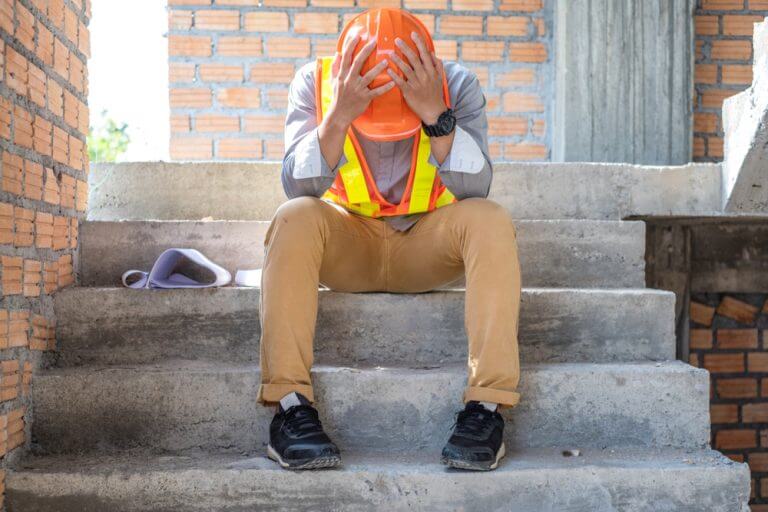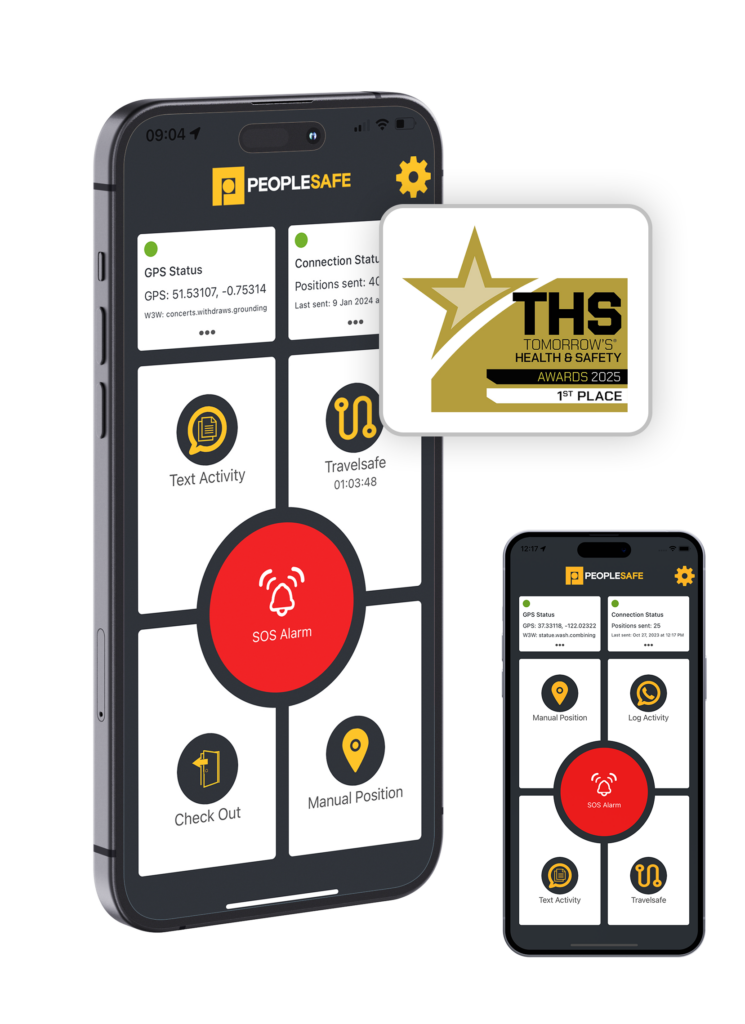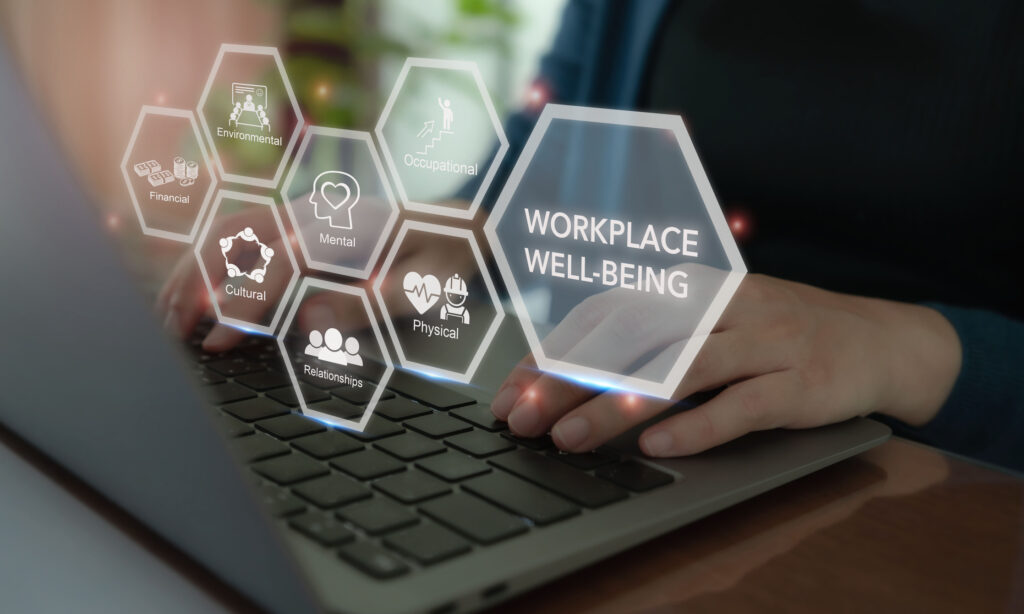The Impacts Of Lone Working On Mental Health
For some, being a lone worker is a choice – such as those who work from home. However, for most, lone working will be a necessary part of the job. These roles include but are not limited to, carers, engineers, estate agents, warehouse operatives and retail workers.
Research by the British Occupational Health Research Foundation found that 64% of lone workers face psychological distress, which is significantly higher than employees working alongside colleagues in a secure environment. In total, 44% of the 1.4 million workers who experience work-related ill-health suffer from stress, depression or anxiety – i.e. mental health conditions.
According to data from the HSE, some industries are notorious for having higher than average rates of ill mental health, including employers in human health and social work as well as education.
Who Are Lone Workers?
A lone worker is anyone working:
- In a building that’s only occupied by one person – for example, a petrol station, home workers or corner shops.
- Separately from other members of a team – for example, a stock room in a retail store or an area of a factory.
- Outside of the standard working hours – for example, cleaners, security or hotel receptionists.
- Away from their fixed location – for example, working on a contractor’s site, vehicle recovery or maintenance work.
- In certain service industry roles – for example, postal workers, estate agents or a sales person visiting their customer’s premises.

Risks Of Lone Working
Every job has risks associated with it, which is why employers are legally required to complete a formal risk assessment to identify and mitigate potential dangers for their employees. When lone working, these risks are often heightened and more difficult to control.
Risks For Public Facing Lone Workers
Public facing lone workers meet and deal with the general public on a daily basis. Depending on their job, they may know the people they’ll be faced with and the environment they’re entering (e.g. care workers and housing officers); alternatively, they might have no idea who they’ll be dealing with, such as parking enforcement officers and retail workers.
The biggest risk they face is the potential for verbal and physical abuse, particularly if they are delivering bad news or selling age-restricted items. Public facing lone workers are consistently faced with dangerous situations that they will need to manage themselves.
Risks Of Working Alone In A Lab
Laboratories and other explosive areas present their own set of health and safety risks which are made more dangerous when working alone. Although hazardous areas like this are monitored and stress-tested for safety, the inherent increased level of danger has an impact on the wellbeing of those required to work in them alone.
Risks Of Working In Remote Areas
Working in a remote area is an every day activity for job roles such as surveyors, engineers and foresters. The isolated locations they work in present an environmental risk largely based around the means of communication and speed of response. If anything should happen, the lone worker will be far away from other people which is why people in remote areas are twice as likely to require hospitalisation due to an injury.
Physical Risks Of Lone Working
Workers with medical conditions such as diabetes and epilepsy present a wellbeing risk to their organisation – it’s the duty of the employer to mitigate this risk. When these employees are allowed to work alone, the risk of them having a medical emergency becomes heightened if they don’t have immediate access to help.
Nonetheless, workers don’t have to have pre-existing medical conditions for them to be at risk of a medical emergency. A fit and healthy employee could easily fall when working from height, trip on a trailing wire or be struck by a moving object.
Impact Of Lone Working Risks On Mental Health
Awareness of the risks highlighted above could cause a lone worker to feel distressed while at work. If left unchecked and unmanaged, it could easily develop into depression and anxiety, having a knock-on effect on their confidence and self-esteem. In this worst-case scenario, the employer might see it starting to affect the worker’s performance and absenteeism.

There are a number of things that employers can do to mitigate these risks and help their employees feel safe while working alone, including the implementation of a ‘buddy system’ or providing them with an appropriate lone working device.
The Impact Of Lone Working On Mental Health
Typically, businesses tend to focus on the physical risks that can impact the safety of their employees. Despite this, evaluating and monitoring mental health is a fundamental part of an employer’s duty of care. While lone workers may be ‘out of sight’, it’s important they don’t become ‘out of mind’ and start to suffer from these common mental wellbeing issues.
Loneliness and Isolation
The feeling of loneliness arises as a result of extended periods of isolation. When you’re in an office or part of a team that works in the same physical space, it’s easier to communicate with each other. It’s more difficult for lone workers to discuss issues or have general catch-up conversations with their colleagues. The significance of this comes to the fore when lone workers are facing emotionally challenging or traumatic workplace situations.
Lone workers on the road, ‘in the field’ or working from home could go a whole day without having a meaningful conversation with another person. However, being a lone worker doesn’t necessarily mean being alone. Public facing lone workers can speak to customers and service users all day long, but this isn’t the same as having social interactions with people you’ve built a rapport and relationship with like work colleagues.
Example: A plumber will have a list of customers to see and a number of jobs to complete, but they will often be left alone to get on with what they need to do. Aside from greetings and a few pleasantries, it’s unlikely that they will have a full conversation.
As a manager of a team including lone workers, it’s important to pick up the phone to talk to the people in your team, and not just when something has gone wrong. Try to check in with them every day to understand how their day is going and if they have any challenges you can help with.
Disconnected
Some lone workers can feel distanced and isolated from the organisation they work for. Remote workers can get forgotten about when it comes to company information and events.
Working alone also means that these employees will miss some of the more enjoyable aspects of working in a team, such as laughter, comradery, support, sharing concerns, receiving encouragement and getting guidance.
It’s important to make sure that lone workers feel like part of the team by encouraging face-to-face contact where possible. Try to build in office time for catch-up meetings – these could happen every other month to discuss things that have been going well and what could be improved. In addition, having a monthly newsletter with regular updates about what’s going on within the business, staff achievements and events that get emailed out to all staff can help them to feel engaged and involved.
Stress
Over 11 million working days are lost each year because of work-related stress, and stress can contribute to other mental health conditions such as anxiety and depression.

Increased levels of stress can be triggered while lone working as a result of having too much work to complete and not enough time to complete it. For example, a delivery driver might have a tight schedule to stick to that gets impacted by traffic. If they fall behind schedule, they could easily become stressed that they won’t make all their deliveries in time and start to make reckless decisions such as speeding to make up time. In addition, they might skip breaks in order to finish on time which can lead to fatigue.
By working alongside lone workers to understand how long certain jobs take and what obstructions they might encounter, you can ensure that they have an acceptable workload and don’t feel under pressure to meet unrealistic targets.
Although there might be a policy that outlines the breaks that employees are entitled to, lone workers still might not take them. To combat this, breaks should be blocked into everyone’s diaries and planned in accordance with the jobs they need to complete. If, for any reason, they’re running behind, they should communicate this so that a solution (that doesn’t involve missing a break) can be put in place.
Lack Of Control
The burden of decision-making can increase stress levels and have a negative impact on a lone worker’s mental health. The physical absence of other colleagues to seek advice from, and discuss different options with, can create a high-pressure situation.
Decision-making levels of authority within the business should be clear. Lone workers need to be empowered to make decisions if they’re trusted to complete the job alone. For example, a District Nurse needs to have the authority to administer medicine to their patients, but should not have the responsibility to change a course of treatment without discussing it with another medical professional.
Guidelines of what a lone worker can decide themselves should be in place. If a decision is beyond their level of authority, there should be a clear process outlining who they need to contact for approval. Ideally, there would be multiple people in this position in case one of them doesn’t answer.
Protecting Lone Worker Mental Health
As a manager and an employer, there are practical steps you can take to protect the mental wellbeing of your lone workers:
- Get the policies right – ensure policies (e.g. lone working policy) draw on best practices, are easy to read and are easily accessible for all staff.
- Risk assessments – include the risks that staff working alone will likely encounter by identifying the main issues and how to mitigate them. Remember to review them regularly, either periodically or after a change to work practices.
- Be proactive – regularly review how the role is going, what’s working well and what changes can be made to improve. Put systems in place as you go, don’t wait for a negative incident or problem to occur.
- Use technology to help – personal safety devices and apps can give lone workers reassurance that backup is available in an emergency situation. Using video conferencing is an easy way to include remote workers in team meetings so that they can contribute to discussions and see their colleagues.
- Signposting – all staff, including lone workers, should know how to access mental health support in your organisation. Whether that’s through a mental health first aider, an Employee Assistance Programme (EAP), HR, managers or colleagues.







